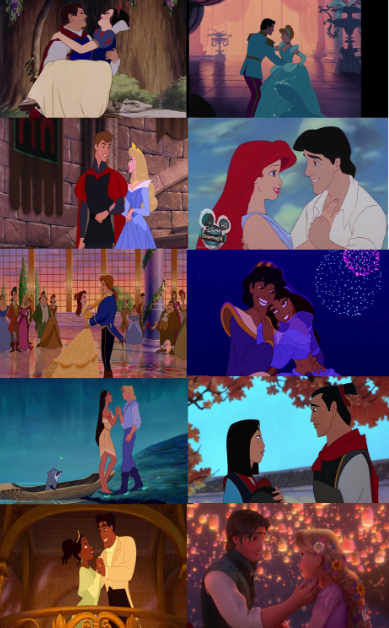

In Disney films, the characters are frequently presented by emphasizing stereotyped gender roles on physical appearance, romantic connections, and the showcase of passive or submissive behavior in some characters. For the main female characters, Disney’s narratives magnify the traditional notions of femininity, the princesses often dream of marrying a charming prince and living a beautiful life forever (Paula, 2020). While the main male characters are often shown as the heroes who protect and assist the princess characters along their growth and adventures (Maity, 2014) and build a romantic connection with them (England et al.,2011).
However, Disney seemed to have attempted to develop more diverse princesses with different settings of ethnicities, personalities, and behaviors. According to England et al.(2011), the Disney movies from earlier (1937-1959), middle(1989-1998), and most current stages (2009-current) have chronologically shown the changes in the representation of the Disney Princess line over time. For example, the princesses Mulan, Merida, Moana, and Elsa have all been praised for challenging gender stereotypes by showing their power, independence, and determination. These characters frequently defy conventional expectations while embarking on their self-development journeys, demonstrating attributes other than the stereotypical female characters who are emotional, domesticated, and simple-minded (Maity, 2014).
The portrayal of gender in Disney Princesses is a complex issue that reflects broader societal attitudes toward gender and has evolved. The representation of Disney princesses has changed over time due to the roles of women have been evolving in society (Paula, 2020). As discussions about gender representation in Disney Princesses continue, there is still some potential for their diversity and representation, especially concerning body types, ethnicities, and gender identities. Given the gender role portrayals present in the films

may influence young audiences’ perceptions of gender, social behaviors, and norms (England et al.,2011), it is critical for Disney to display a wide range of gender representations of characters and offer a greater education on breaking traditional gender norms.